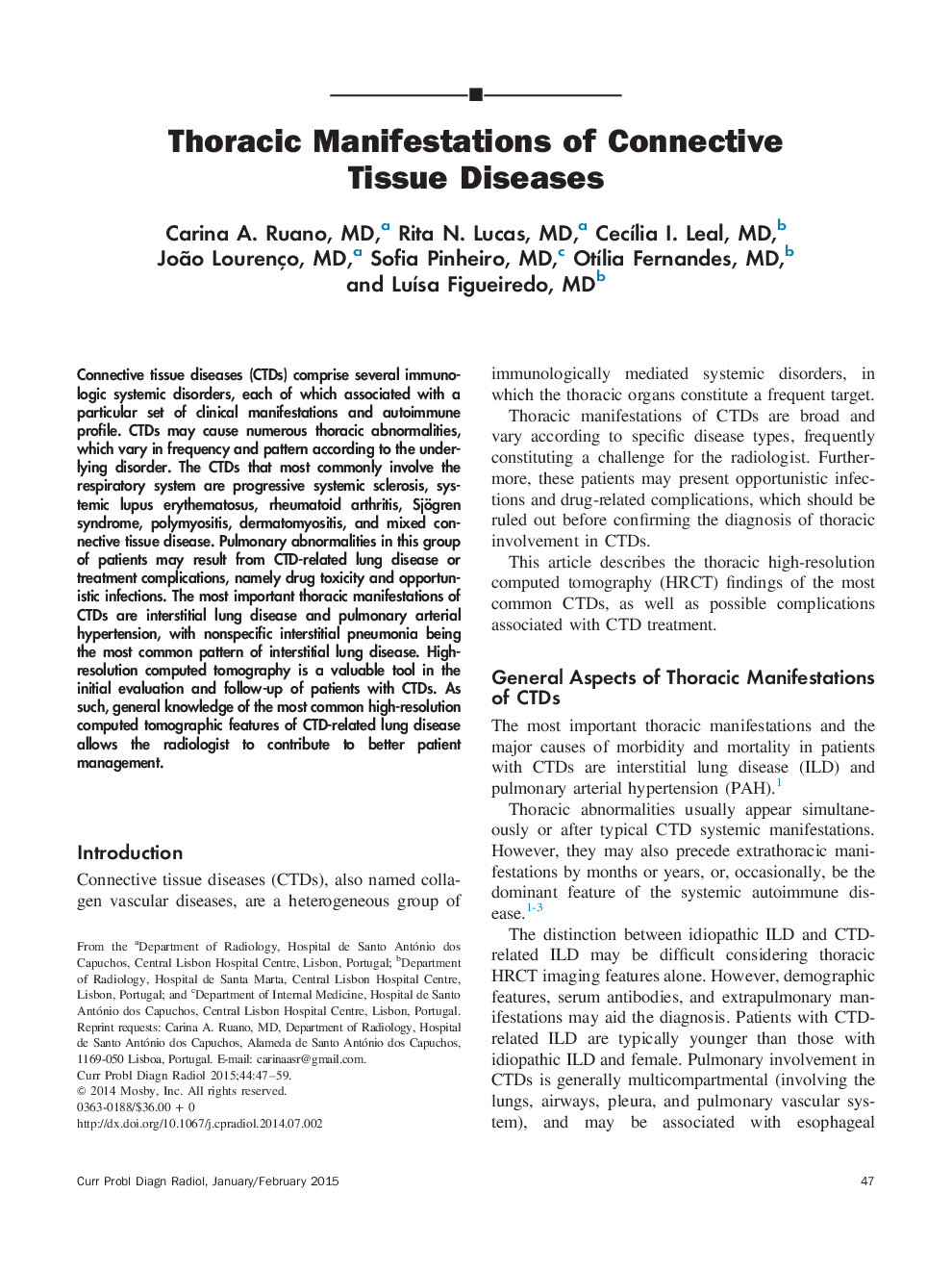| Article ID | Journal | Published Year | Pages | File Type |
|---|---|---|---|---|
| 4223413 | Current Problems in Diagnostic Radiology | 2015 | 13 Pages |
Connective tissue diseases (CTDs) comprise several immunologic systemic disorders, each of which associated with a particular set of clinical manifestations and autoimmune profile. CTDs may cause numerous thoracic abnormalities, which vary in frequency and pattern according to the underlying disorder. The CTDs that most commonly involve the respiratory system are progressive systemic sclerosis, systemic lupus erythematosus, rheumatoid arthritis, Sjögren syndrome, polymyositis, dermatomyositis, and mixed connective tissue disease. Pulmonary abnormalities in this group of patients may result from CTD-related lung disease or treatment complications, namely drug toxicity and opportunistic infections. The most important thoracic manifestations of CTDs are interstitial lung disease and pulmonary arterial hypertension, with nonspecific interstitial pneumonia being the most common pattern of interstitial lung disease. High-resolution computed tomography is a valuable tool in the initial evaluation and follow-up of patients with CTDs. As such, general knowledge of the most common high-resolution computed tomographic features of CTD-related lung disease allows the radiologist to contribute to better patient management.
